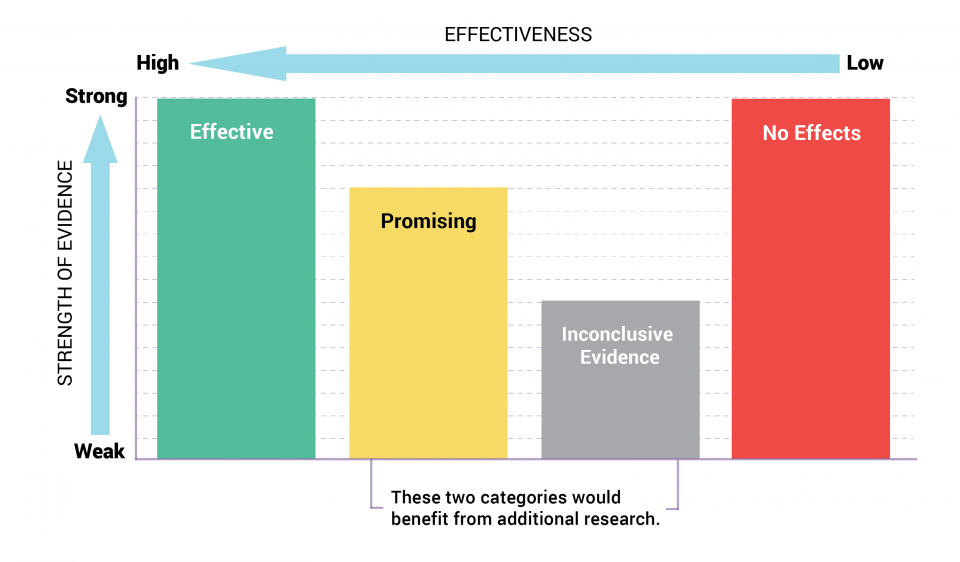CrimeSolutions Evidence Continuum
Description
On CrimeSolutions, programs and practices fall into one of four categories, listed below in order of effectiveness from the continuum:
- Rated as Effective: Programs and practices have strong evidence to indicate they achieve criminal justice, juvenile justice, and victim services outcomes when implemented with fidelity.
- Rated as Promising: Programs and practices have some evidence to indicate they achieve criminal justice, juvenile justice, and victim services outcomes. Included within the promising category are new, or emerging, programs for which there is some evidence of effectiveness.
- Inconclusive Evidence: Programs and practices that made it past the initial review but, during the full review process, were determined to have inconclusive evidence for a rating to be assigned. See Reasons for Rejecting Evaluation Studies. Interventions are not categorized as inconclusive because of identified or specific weaknesses in the interventions themselves. Instead, our reviewers have determined that the available evidence was inconclusive for a rating to be assigned. Review programs reviewed but not assigned a rating or practices reviewed but not assigned a rating.
- Rated as Ineffective: Programs have strong evidence that the program did not have the intended effects when trying to achieve justice-related outcomes. While programs rated Ineffective may have had some positive effects, the overall rating is based on the preponderance of evidence.
- Rated as Negative Effects: Programs have strong evidence that the program had harmful effects when trying to achieve justice-related outcomes.

